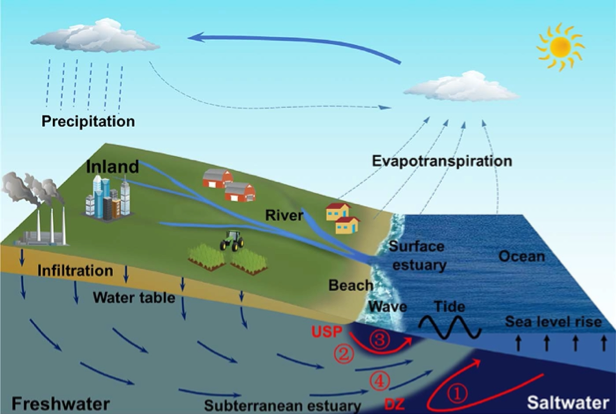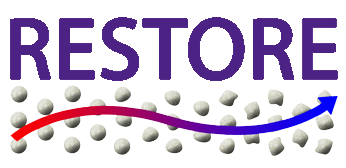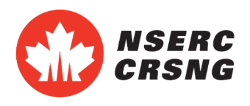Groundwater - Coastal Water Interactions
Background
Canada has the world's longest coastline stretching along the Atlantic, Pacific and Arctic Oceans as well as inland coastal waters such as the Great Lakes and Lake Winnipeg. Coastal areas are of enormous economic, ecological and societal value for Canada, yet this value is being increasingly diminished by poor water quality. Coastal waters and groundwater are inextricably linked with interactions between these two water entities significantly impacting the movement and transformation of pollutants in coastal environments and, as a result, the integrity of coastal water resources. From a coastal water perspective, groundwater can be a major contributor of pollutants to coastal water. From a terrestrial perspective, groundwater-coastal interactions underpin the contamination of coastal aquifers by seawater (salt) as well as the mobility and fate of hazardous groundwater pollutants in coastal aquifers.

Interactions between groundwater systems and coastal waters in nearshore marine environment (Modified from: Robinson et al., 2017, Advances in Water Resources)
Program Objectives
The overall objective of this program is to develop new scientific understanding of the impact of groundwater-coastal water interactions on the movement and transformation of pollutants in coastal environments to inform management and policy initiatives. Specific project objectives include:
- Evaluate the impact of climate change on the transport and transformation of pollutants near the groundwater-coastal water interface and their release to coastal waters;
- Develop innovative regional-scale field and modelling tools to assess groundwater pollutant inputs to coastal waters.
- Evaluate the impact of periodic (waves, tides) and extreme (storm surges) oceanic forcing on coastal aquifer contamination.
Research Methods
Field Investigations
Field investigations are being conducted in inland coastal waters to examine the impacts of groundwater-coastal water interactions on the fate of groundwater pollutants (nutrients, metals, microbial contaminants) and their release to coastal waters. Multi-scale field investigations are being conducted ranging from local site-specific investigations focused on quantifying interacting chemical and hydrological processes that control groundwater pollutant inputs to coastal waters, to regional scale investigations that use environmental tracers for large scale quantification of groundwater inputs to coastal waters.


Groundwater-coastal water field investigations in Lake Huron and Lake Simcoe, ON
Click here for more project photos
Numerical groundwater and reactive transport modeling
Numerical reactive transport models are being developed to investigate climate change impacts on pollutant release from groundwater to coastal waters including the impacts of episodic large storm events.

Reactive transport simulations investigating impact of coastal forcing on nitrogen transport in coastal aquifers.
Program Output
Journal Papers (2014 - 2022)
Wallace, H., T. Ji, C.E. Robinson, 2020. Hydrogeological controls on heterogeneous groundwater discharge to a large glacial lake, Journal of Great Lakes Research, doi: 10.1016/j.jglr.2020.03.006.
Kuan, W.K., P. Xin, G. Jin, C.E. Robinson, B. Gibbes, L. Li, 2019. Combined effect of tides and varying inland groundwater input on flow and salinity distribution in unconfined coastal aquifers, Water Resources Research, 55, 8864-8880, doi: 10.1029/2018WR024492.
Conant, B., C.E. Robinson, M.J. Hinton, H.A. Russell, 2019. A framework for conceptualizing groundwater-surface water interactions and identifying potential impacts on water quality, water quantity, and ecosystems, Journal of Hydrology, 574, 609-637, doi: 10.1016/j.jhydrol.2019.04.050.
Rakhimbekova, S., D.M O’Carroll, M.S. Andersen, M. Wu, C. Robinson, 2018. Effect of transient wave forcing on the behavior of arsenic in a nearshore aquifer, Environmental Science & Technology, doi: 10.1021/acs.est.8b03659.
Trvalgnik, V., D. Morrow, K. Weber, L. Li, C. Robinson, 2018. Analysis of tide- and offshore storm-induced water table fluctuations for structural characterization of a coastal island aquifer, Water Resources Research, 54(4) doi: 10.1002/2017WR020975.
Robinson, C., Xin, P., I. Santos, M. Charette, L. Li, D.A. Barry, 2018. Groundwater dynamics in subterranean estuaries of coastal unconfined aquifers: Controls on submarine groundwater discharge and chemical inputs to the ocean, Advances in Water Resources, 115, doi: 10.1016/j.advwatres.2017.10.041.
Yu, X., C. Lu, C. Robinson, L. Li, D.A. Barry, P. Xin, 2017. Effects of episodic rainfall on a subterranean estuary, Water Resources Research, 53(7), 5774-5787, doi: 10.1002/2017WR020809.
Robinson, C., 2015. Review on groundwater as a source of nutrients to the Great Lakes and their tributaries, Journal of Great Lakes Research, 41(4), 941-950, doi:10.1016/j.jglr.2015.08.001.
Anwar, N., C. Robinson, D.A. Barry, 2014. Influence of tides and waves on the fate of nutrients in a nearshore aquifer: Numerical simulations, Advances in Water Resources, 73, 203-213, doi: 10.1016/j.advwatres.2014.08.015.
Lee, J., C. Robinson, R. Couture, 2014. Effect of groundwater-lake interactions on arsenic enrichment in freshwater beach aquifers, Environmental Science and Technology, 48(17), 10174-10181, doi: 10.1021/es5020136.
Xin P., S. Wang, C. Robinson, L. Li, Y-G Wang, D.A. Barry, 2014. Memory of past random wave conditions in submarine groundwater discharge, Geophysical Research Letters, 41(7), 2401-2410, doi:10.1002/2014GL059617.
Rocha, C., H. Bokuniewicz, C.E. Robinson, I. Santos, H. Waska, 2022. To study the invisible: hydraulics, biogeochemisty and life in subterranean estuaries, Frontiers in Environmental Science, DOI: 10.333/fenvs.2022.988723
Rakhimbekova, S., M. Wu, V. Post, C.E. Robinson, 2022. Effect of time-varying wave conditions on the fate of nitrogen in a freshwater unconfined nearshore aquifer. Advances in Water Resources, 167. DOI:10.1016/j.advwatres.2022.104273
Rakhimbekova, S., D.M. O’Carroll, C.E. Robinson, 2021. Occurrence of Arsenic in Nearshore Aquifers Adjacent to Large Inland Lakes. Environmental Science & Technology, 55. DOI:10.1021/acs.est.1c02326
Rakhimbekova, S., D.M. O'Carroll, C.E. Robinson, 2021. Factors controlling phosphorus mobility in nearshore aquifers adjacent to large lakes, Science of The Total Environment, 799. DOI:10.1016/j.scitotenv.2021.149443
Rocha, C., C.E. Robinson, I.R. Santos, H. Waska, 2021. A place for subterranean estuaries in the coastal zone. Estuarine, Coastal and Shelf Science, 250. DOI:10.1016/j.ecss.2021.107167
Project Team
Project Leaders:
Project Members:
Sabina Rakhimbekova, Post doctoral Associate
James Gale, MESc (Completed 2022)
Ming Wu, Post doctoral Associate
Hayley Wallace, MESc (Completed 2018)
Victoria Trvalgnik, MESc (Completed 2016)
Supporting Organizations:





